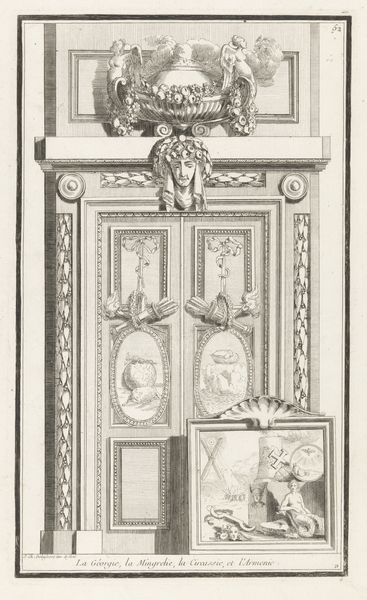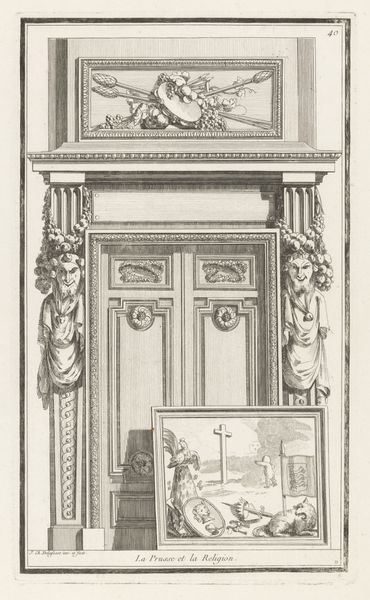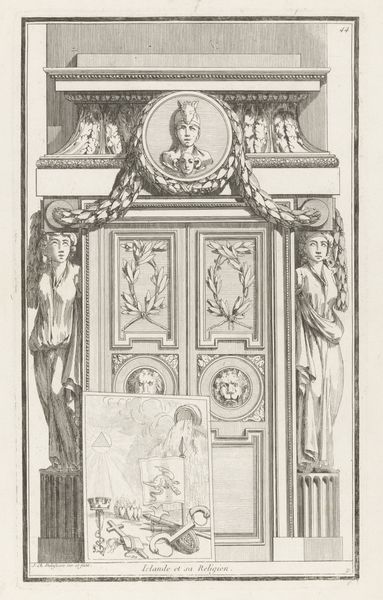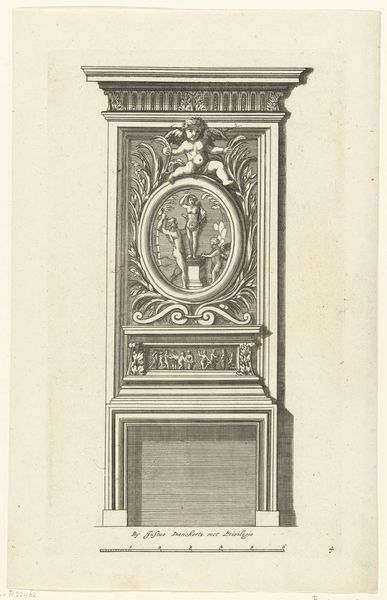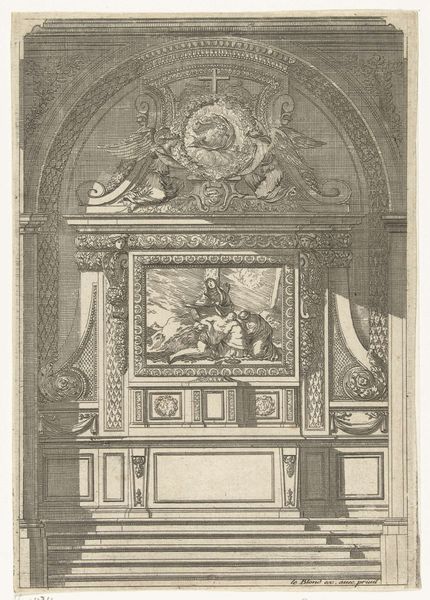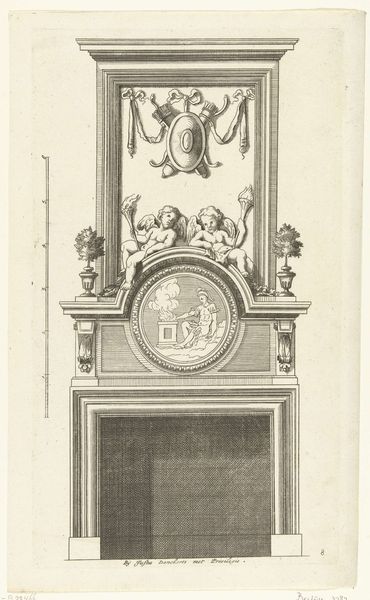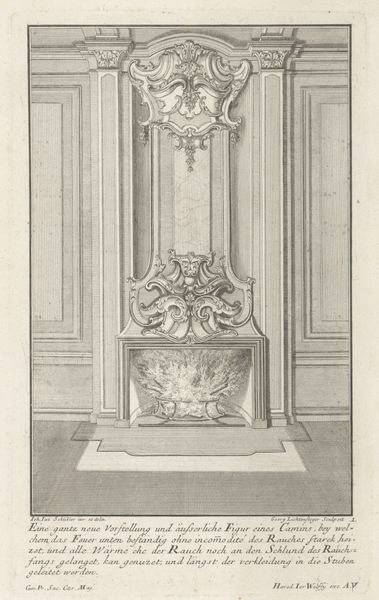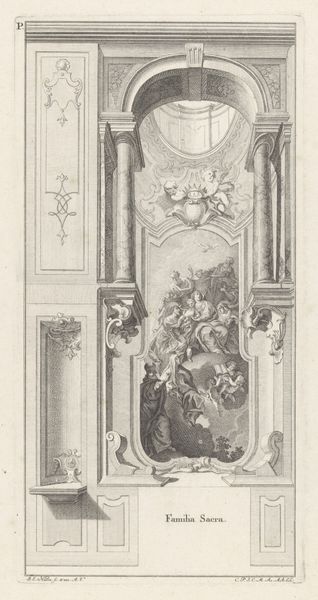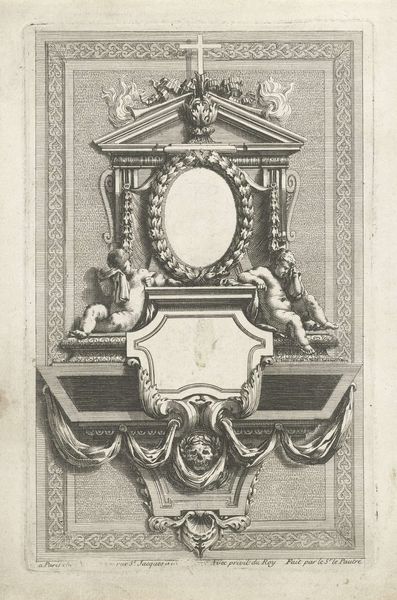
Dimensions: height 380 mm, width 230 mm
Copyright: Rijks Museum: Open Domain
Editor: This is Jean Charles Delafosse’s “Abessinië (Ethiopië),” made between 1768 and 1771. It's an engraving depicting a doorway, but not a simple one – it's adorned with allegorical images. I find the doorway itself imposing, almost like a symbolic entry point to a constructed ideal. What do you make of it? Curator: The imposing nature you observe speaks volumes, especially when viewed through the lens of Orientalism and its relationship to power. Consider how the architecture itself is presented. Does it truly reflect Ethiopian architecture, or is it filtered through a European understanding and, frankly, a projection of dominance? This piece invites us to consider how Europe imagined and represented “the Orient,” not necessarily how it *was.* Editor: That’s a great point. I hadn't really thought about it in terms of how it was projecting an image *onto* Ethiopia rather than reflecting any reality. So, the doorway isn’t just a doorway; it’s a statement. What about the allegorical images within the frame? Curator: Exactly! The allegories need unpacking too. Look at the imagery: what symbols are used to represent Ethiopia and its religion? Are these respectful or do they reinforce colonial attitudes prevalent in 18th-century Europe? Think about the context. This piece emerges during the Enlightenment, but also a period of intense colonialism. How do those tensions play out here? Editor: So it's less a celebration of Ethiopia and more a reflection of Europe's understanding, or rather *misunderstanding*, of it? The artist is almost imposing a European idea *on* Ethiopia through these images. Curator: Precisely. By recognizing these biases, we move toward a more nuanced and critically engaged understanding of not only this piece but the broader cultural narratives surrounding identity and representation. What did you discover in thinking about this? Editor: That's fascinating – I never considered the visual language of colonialism so explicitly. I’ll definitely look at art from this period with a much more critical eye now. Curator: And that critical eye allows us to rewrite narratives and center the voices that have been marginalized in Art History.
Comments
No comments
Be the first to comment and join the conversation on the ultimate creative platform.
